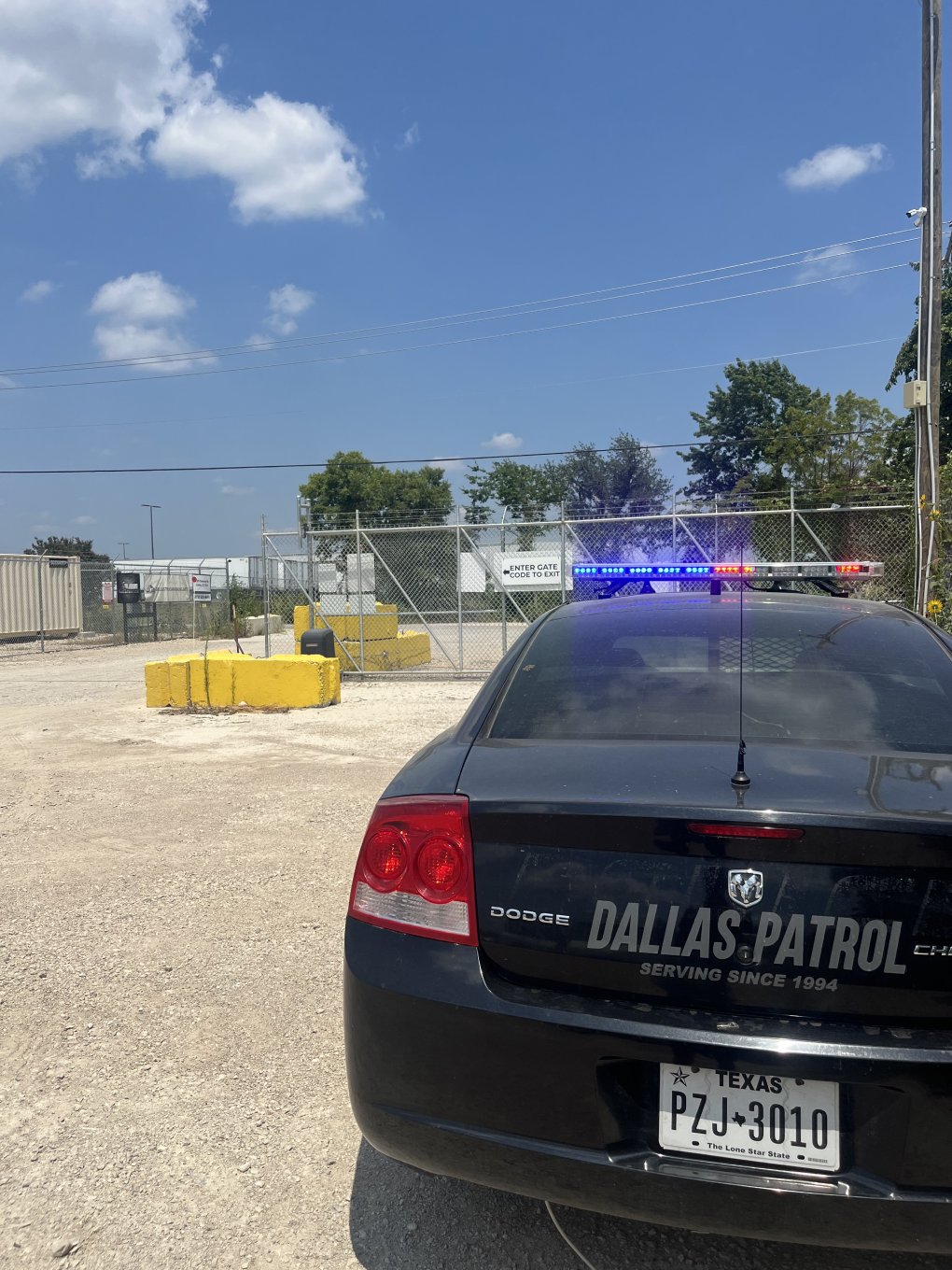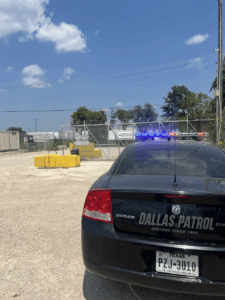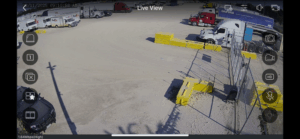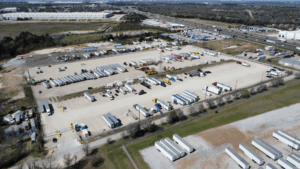Late at night on a Texas highway, it’s common to see trucks lined up on exit ramps, shoulders, or in empty lots. Drivers aren’t there by choice; they mostly have run out of legal hours and have no safe place to park. This has become a daily struggle across the country, known as the truck parking shortage.
For the U.S. trucking industry, the problem is a lot more than just a small inconvenience. Limited commercial truck parking is stressful for drivers. It raises safety risks and slows down deliveries that keep shelves stocked. Texas, one of the busiest freight hubs in America, feels the most strain with long-haul and oilfield trucks competing for the same limited spaces.
This is frustrating for drivers and also a challenge that affects supply chains, businesses, and consumers.
Why Truck Parking Shortage is a Growing Problem
The U.S. moves more than 70% of its freight by truck, but the space for those trucks to park hasn’t kept up with demand. As freight rises each year, drivers are left circling rest areas, truck stops, and city edges looking for open spots.
For many, the search can sometimes take close to an hour, which takes up their regulated driving time and cuts into pay. Federal Hours-of-Service (HOS) rules need drivers to stop after a specific hour, but if parking isn’t available, they’re forced to make unsafe choices like parking on ramps, highway shoulders, or empty lots.
This shortage is more than an inconvenience. It creates safety risks for drivers and the public. The drivers also waste time searching, which increases fuel costs. This adds pressure to an industry already dealing with tight schedules. In Texas, where freight traffic is heavy on corridors like I-10 and I-35, the gap between parking demand and availability is wide.
Related: How to Ensure Your Truck is Safe in a Secure Semi Truck Parking Lot
The Impact on the Trucking Industry
The truck parking shortage has hit the industry in its own way. For drivers, it means more stress, unsafe rest breaks, and fewer hours on the road earning money. For companies, it means higher costs and less dependability.
- Driver Safety & Exhaustion
Without safe parking, drivers push themselves longer than they should or stop at risky areas. This increases the chance of accidents, adding to exhaustion, which is one of the major safety concerns in trucking.
2. Lost Time and Efficiency
Industry studies show drivers lose an hour each day searching for parking. This time is not spent moving freight, which delays deliveries and also hurts productivity. Over weeks and months, the lost miles add up to major costs.
3. Economic Impact
When trucks are delayed, goods are too. Groceries, construction materials, etc, that are carried by these trucks arrive late. This disturbs the supply chains and increases the costs for businesses and consumers.
4. Texas Spotlight
Shortage is visible even more in Texas. The state is a crossroad for freight going towards the east, west, and into Mexico. In oilfield trucking and long rural stretches with few rest areas, drivers face an even tougher time finding safe parking.
Related: What Are the Legal Requirements for Truck Parking in Dallas, Texas?
How the Commercial Truck Parking Shortage Affects Drivers Directly
For truck drivers, the parking shortage is not a statistic, but it shapes their daily routine. Every trip has the same problem: will there be a safe place to stop at night?
This uncertainty adds stress before they can even reach their destination. Drivers usually cut their workday short to get a spot early, which means fewer miles and less pay. Others keep driving until the last minute, only to end up parking on the side of the road or in unsecure areas.
This creates real risks. Trucks parked in poorly lit or unauthorized areas are more exposed to theft and accidents. Drivers themselves get exhausted when they can’t plan proper rest. This can lead to safety issues on the highway.
Surveys show many drivers rank commercial truck parking as one of their biggest frustrations on the job. Sometimes, even more than long hours or time away from home. It’s about a comfortable, safe, and reliable place to rest so that they can keep the industry moving.
Current Solutions to the Truck Parking Shortage
Efforts are ongoing across the country to solve the truck parking shortage, but the progress is slow compared to the growing demand.
- Federal Funding
The U.S. Department of Transportation has started directing funds to projects that expand commercial truck parking capacity on major freight corridors. These investments aim to create safer spaces for drivers and reduce the daily search for parking.
2. State-Level Efforts
States are also taking their own steps to address the issue. In Texas, officials are focusing on high-traffic areas like I-10 and I-35, where the shortage is the most. Studies and pilot programs are helping guide the new parking development across the state.
3. Technology Tools
There are a lot of technology solutions to help drivers find open spots in real time. Parking apps and digital message boards reduce wasted miles and save fuel by pointing drivers to available commercial truck parking facilities.
4. Private Truck Stops
Large truck stop chains are expanding their lots and adding more facilities. But, the growth is not matching the demand. Drivers still report that many truck stops are full by early evening.
5. Public-Private Partnerships
Some communities are working with trucking companies to convert unused land into safe and secure parking areas. These projects look promising, but don’t have a lot of scope.
6. Texas Initiatives
The Texas truck parking shortage has received more attention in recent years. The Texas Department of Transportation is surveying drivers, analyzing freight routes and testing programs to improve the rest options in one of the busiest freight states in the country.
Related: What Is the Cost of Truck Parking in Dallas & Where to Find Affordable Spots?
What’s Still Missing in Commercial Truck Parking Efforts
While progress has started, the truck parking shortage will not be solved without bigger chances and strong long-term planning.
- More Infrastructure Investment
Federal and state funding have to go beyond pilot programs. Building new rest areas and adding capacity at already existing facilities is important for the growing freight demand.
2. Better Land Use Planning
Cities and counties need to think about commercial truck parking in zoning and development plans. Without a designated space, drivers will continue to struggle in urban and rural areas.
3. Stronger Industry Collaboration
Shippers, carriers, and logistics companies have a big role in working with drivers to schedule deliveries near safe parking options. This will reduce the time lost on the road.
4. Technology Expansion
Real-time parking apps are a big help, but they need to go wider and integrate them in all states to make a difference.
5. Texas as a Priority
With its position as a national freight hub, Texas truck parking has to be the top focus. Expanding rest capacity on interstates and in oilfield regions will help Texas and the national supply chain.
Final Thoughts
The Truck parking shortage has grown into one of the biggest challenges facing the U.S. trucking industry. It puts drivers in unsafe situations, slows down freight movement, and starts a chain reaction that reaches businesses and consumers. While new commercial trucking parking projects, technology tools, and state-led programs are in the right direction, the gap between demand and supply is still very wide.
Texas is an example of how urgent the issues have become. With heavy load and long highways, the state’s truck parking shortage is a clear sign that shows investment and planning area.
Unless drivers have safe places to stop, the shortage will continue to affect safety and the overall economy. Solving it will need stronger commitments from state governments and the trucking industry working together.
Related: How to Find Truck Parking Nearby






